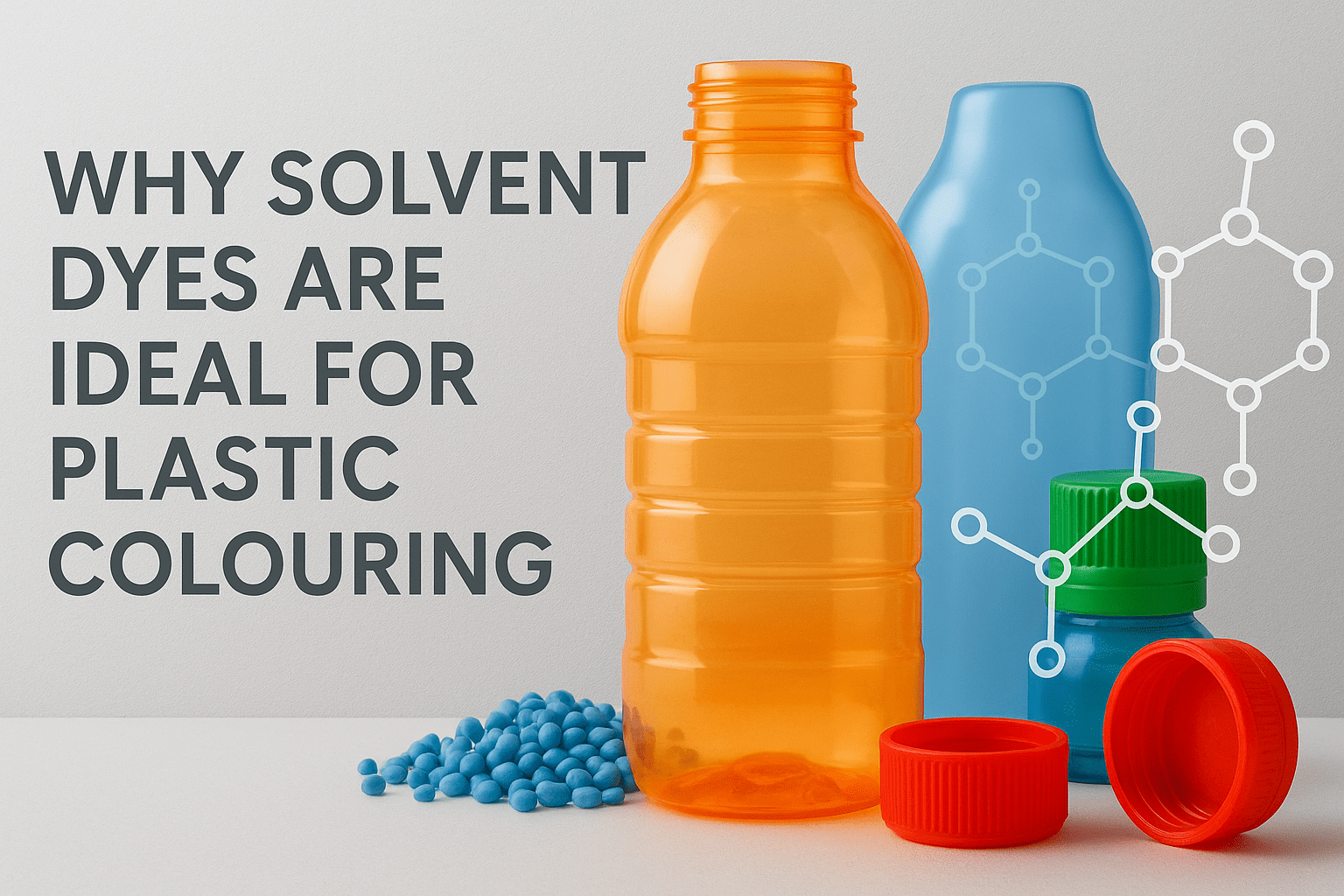Have you ever admired the deep, vibrant, and perfectly transparent color of a plastic bottle, a car’s tail light, or a brightly colored pen? The secret to achieving that flawless, jewel-like hue isn’t paint or pigment, but a special class of colorants known as solvent dyes.
While pigments are excellent for creating opaque colors, Solvent Dyes are the undisputed champions when it comes to transparent coloration and high-performance applications. But what makes these solvent based colorants so effective for plastics?
This technical breakdown will explore why Solvent Dyes for Plastic are the ideal choice for a huge range of modern polymer applications.
What Are Solvent Dyes and How Do They Work?
The magic of a solvent dye lies in its name: it dissolves.
Unlike pigments, which are fine, solid particles that are dispersed within the plastic (like sand mixed in water), Solvent Dyes dissolve completely into the polymer at a molecular level during the melting process (like sugar dissolving in water). This fundamental difference is the key to all their advantages. Because the dye molecules are individually distributed throughout the plastic, they don’t scatter light, resulting in exceptional transparency and brilliance.
The Key Advantages of Using Solvent Dyes for Plastic
Choosing the right colorant is critical, and solvent based colorants offer a unique set of benefits that make them indispensable for high-quality plastic products.
1. Exceptional Transparency and Brilliance This is the number one reason to choose Solvent Dyes. Because they dissolve completely, they provide a crystal-clear color that allows the natural transparency of the plastic to shine through. This is essential for products made from resins like acrylic (PMMA), polycarbonate (PC), and polystyrene (PS).
2. High Color Strength Solvent Dyes are incredibly powerful. A very small amount of dye can produce a strong, deep, and vibrant color. This high tinctorial strength makes them a very cost-effective coloring solution, as less colorant is needed to achieve the desired shade.
3. Excellent Heat Stability The world of plastics involves a lot of heat. High performance Solvent Dyes for Plastic, such as those from the anthraquinone, quinoline, and perinone chemical classes, are engineered to withstand the high processing temperatures of engineering plastics like PET and polyamide (Nylon) without degrading or changing color.
4. Good Solubility & Easy Dispersion These dyes are designed to be readily soluble in the polymer melt. This ensures a consistent, homogenous, and speck-free coloration throughout the final product, which is critical for maintaining high quality and avoiding defects.
5. Good Fastness Properties Many high-quality Solvent Dyes offer good lightfastness and resistance to migration. This means the color won’t fade easily when exposed to light and won’t bleed or move from one plastic layer to another over time, ensuring the product’s aesthetic appeal lasts.
Choosing the Right Solvent Dyes for Plastic Applications
Not all solvent based colorants are created equal. The right choice depends on the specific plastic and its end-use. For example:
• Anthraquinone Dyes: Offer a wide range of bright colors (reds, blues, greens) with good heat and light stability.
• Quinoline Dyes: Known for producing brilliant greenish-yellows with excellent heat stability.
• Perinone Dyes: Provide top-tier heat and weather resistance, making them ideal for high-performance oranges and reds in automotive applications.
When it comes to coloring plastics, the choice of colorant has a huge impact on the final product’s quality, durability, and appeal. For applications that demand high transparency, brilliant color, and excellent stability, Solvent Dyes are the clear winner. By dissolving into the polymer matrix, these powerful solvent based colorants provide a level of clarity and vibrancy that pigments simply cannot match. If you’re looking to elevate your plastic products with stunning, durable color, exploring the world of Solvent Dyes for Plastic is your next logical step. Our experts are always here to help you find the perfect colorant for your specific polymer and application needs.
